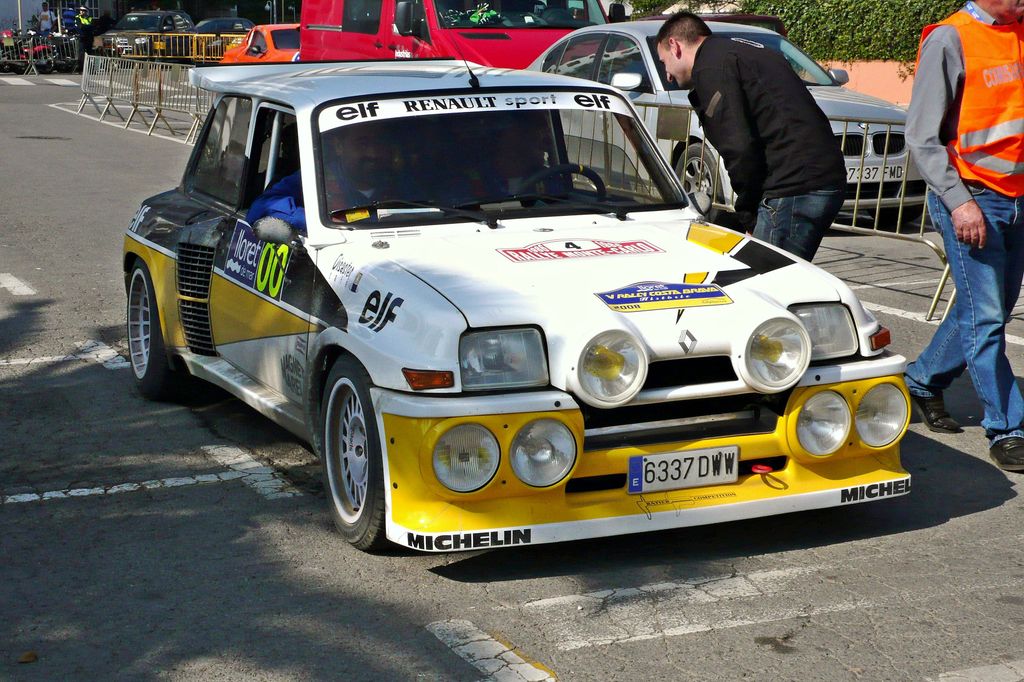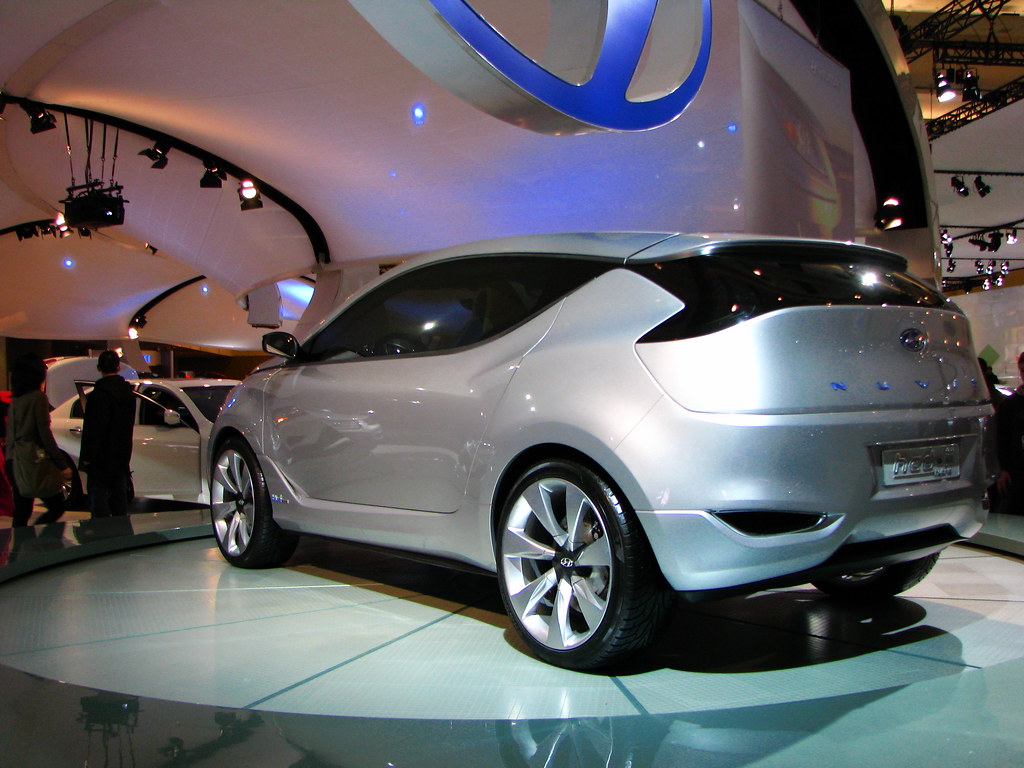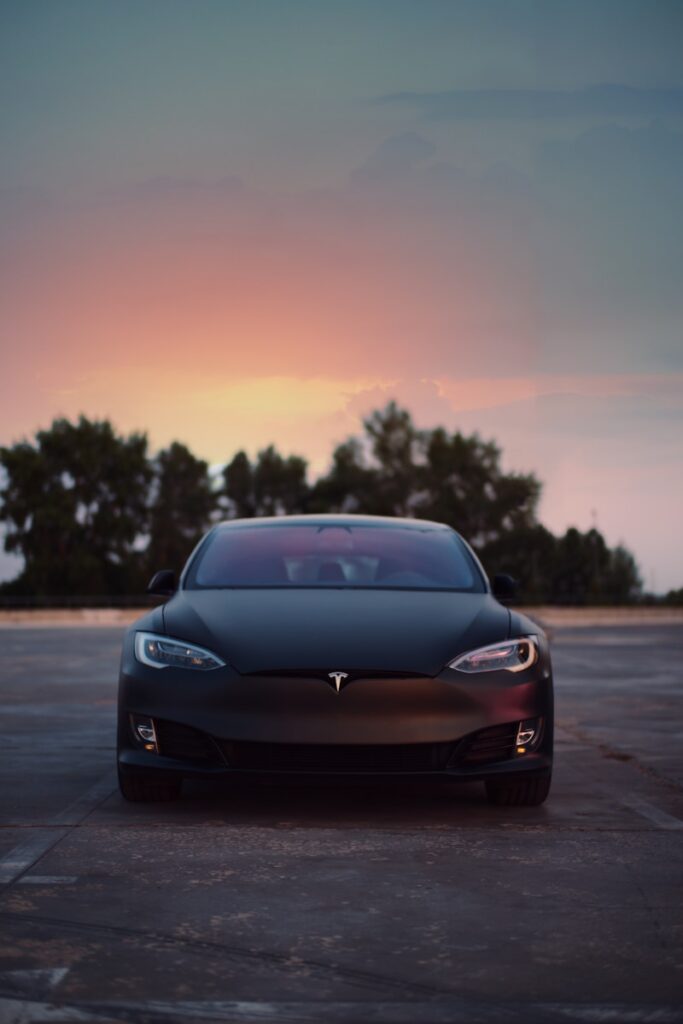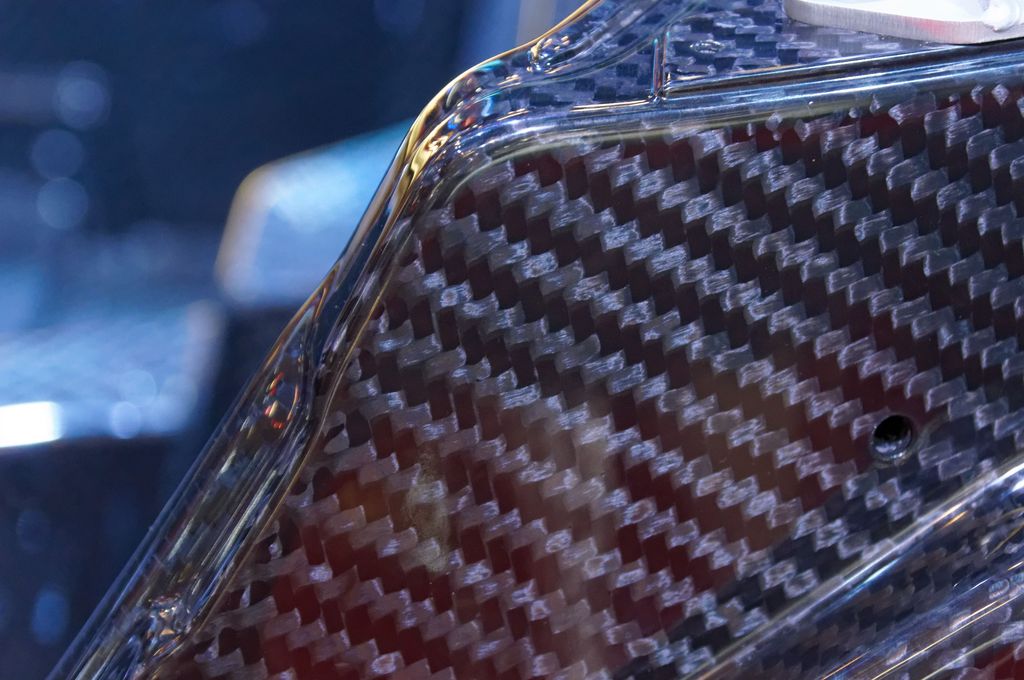
In the expansive and passionate world of automotive engineering, a car’s prowess is often measured by a symphony of factors: the sleek lines of its exterior, the cutting-edge technology nestled within its cabin, and, of course, the raw, exhilarating figures of its engine output. Yet, for true aficionados and casual drivers alike, there’s an often-overlooked, yet profoundly impactful, element that profoundly shapes the driving experience: the very sound an engine produces. It’s an auditory signature, a mechanical voice that can either stir the soul with its resonant growl or, regrettably, leave much to be desired.
High-performance brands meticulously craft this sonic identity, investing immense effort into tuning exhaust notes and engine harmonics to deliver what they consider a “superb soundtrack.” Ferrari’s legendary V12s are a testament to this pursuit, designed not just for power but to offer an auditory spectacle that ignites the senses. Even in the burgeoning era of electric vehicles, the importance of sound persists, as evidenced by innovations like Dodge’s Fratzonic Chambered exhaust, an ambitious endeavor to artificially recreate the satisfying, robust rumble of a V8, aiming to captivate a new generation of enthusiasts with a manufactured auditory appeal.
An engine’s unique soundscape is an intricate dance of its revolutions per minute, generating distinct frequencies that contribute to its overall character. The number of cylinders plays a pivotal role, directly influencing pitch—generally, more cylinders tend to produce a higher tone. However, the auditory tapestry is far richer, woven from threads like specific engine components, such as header pipes, and the nuances of various transmission types. The exhaust system, a critical final flourish, sculpts these raw mechanical sounds into unique notes, capable of eliciting delight or, conversely, prompting a less enthusiastic response from listeners. While the automotive world is replete with engines that sing a powerful, harmonious tune, occasionally, a powerplant emerges that, for various reasons, strikes a less appealing chord. Today, we embark on a journey to explore some of these more sonically challenging creations, delving into what makes their acoustic signatures, shall we say, memorable for all the wrong reasons.
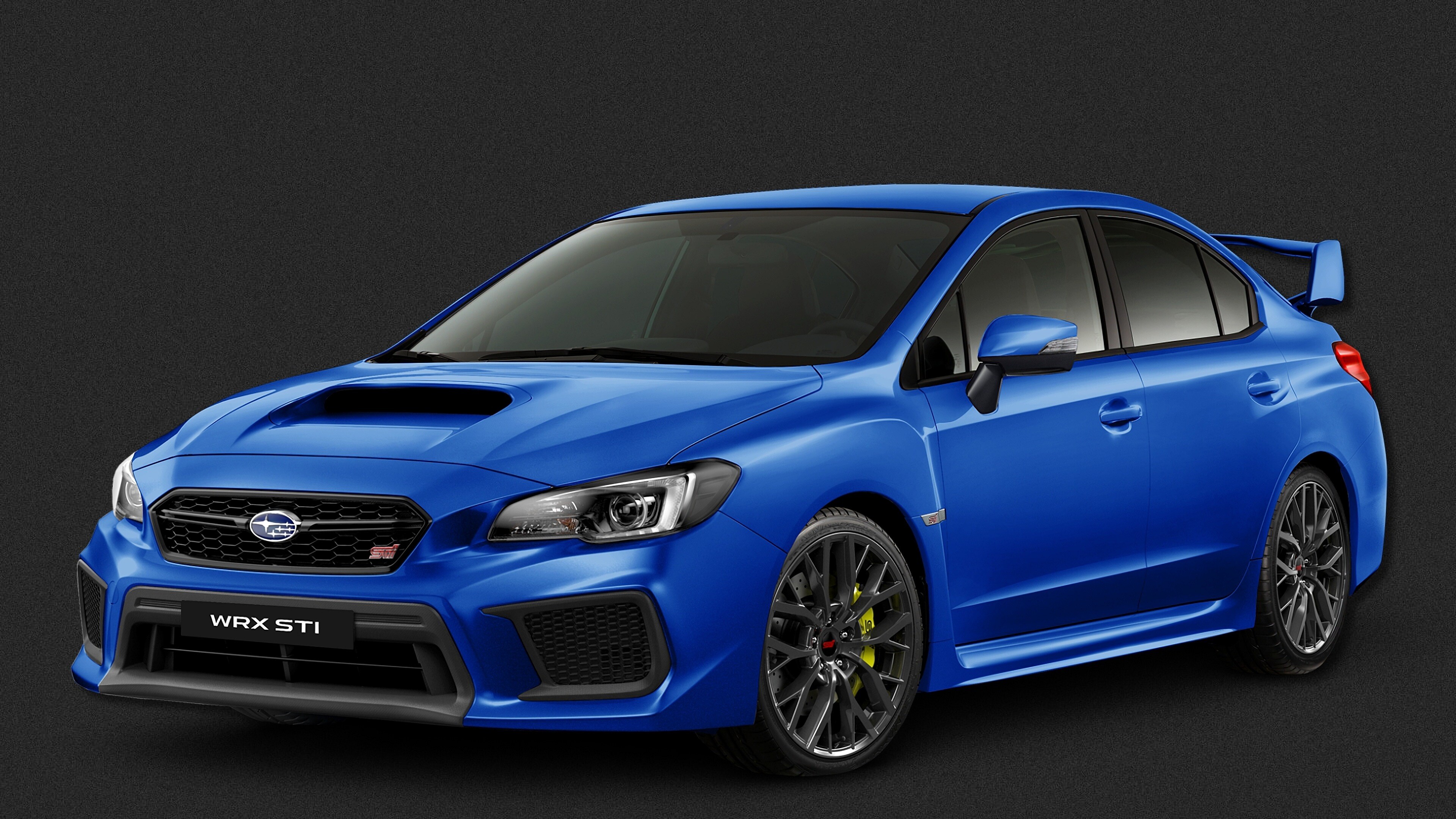
1. **The Subaru Boxer Engine (WRX): A Burbling Enigma**The Subaru WRX has carved out a formidable reputation as a highly capable rally-bred machine, revered for its all-wheel-drive prowess and engaging driving dynamics. It offers a plethora of benefits that appeal to a dedicated fanbase, from its tenacious grip to its exhilarating acceleration. However, despite its undisputed performance credentials, the distinctive flat-4 Boxer engine that lies beneath its hood has long been a subject of considerable debate, particularly when it comes to its acoustic output. This engine, with its horizontally opposed cylinders, generates a sound that can only be described as truly unique, often polarizing opinions among even the most ardent automotive enthusiasts.
The peculiar “burbling” sound characteristic of the 2.5-liter Boxer engine, especially during acceleration, stems directly from its unique orientation and the configuration of its unequal length header pipes. This design quirk creates a specific exhaust pulse that many drivers either adore for its individuality or find grating to the ear. For some, this raspy trill adds to the car’s distinctive character, an auditory emblem of its unconventional engineering. Yet, for others, particularly when the WRX is used as a daily driver, this constant burble transforms into an insistent, sometimes annoying, soundtrack that can become tiresome over time, making it less than ideal for those seeking a smooth, unobtrusive auditory experience.
Adding another layer to this complex sonic signature is the high-pitched squeak of the turbocharger, an almost unavoidable companion to the forced-induction setup. This additional mechanical whine, while indicative of the power being generated, often does little to enhance the overall acoustic appeal of the Boxer engine. Instead, it frequently contributes to the perception of a cacophony rather than a harmonious blend of mechanical sounds, further pushing the engine’s sound profile into the ‘unappealing’ category for many discerning ears. It’s a testament to the WRX’s other strengths that its popularity continues to endure despite this often-criticized auditory characteristic.
Interestingly, Subaru’s engineers themselves seemed to acknowledge this mixed reception, as evidenced by changes introduced in newer iterations of the WRX. The shift to a 2.4-liter turbocharged Boxer engine saw the removal of the unequal length header pipes, a design choice specifically aimed at mitigating the iconic “burble” tones that had previously defined the car’s sound. This modification, while perhaps intended to broaden the appeal of the WRX’s exhaust note, predictably ignited a fresh wave of mixed reactions within the community. Some lamented the loss of what they considered an exclusive and charming audible accent, feeling that the new orchestra of engine tones became bland and underwhelming as a result.
This evolution highlights the delicate balance manufacturers must strike between engineering efficiency, performance goals, and the subjective realm of auditory preference. The legacy of the Boxer engine’s sound in the WRX, particularly its “burble,” remains a significant part of its identity, a sound that, for better or worse, continues to spark lively discussion and define a unique corner of the performance car landscape. It proves that even highly capable and beloved vehicles can possess a sound signature that divides opinion as sharply as a finely tuned exhaust note.
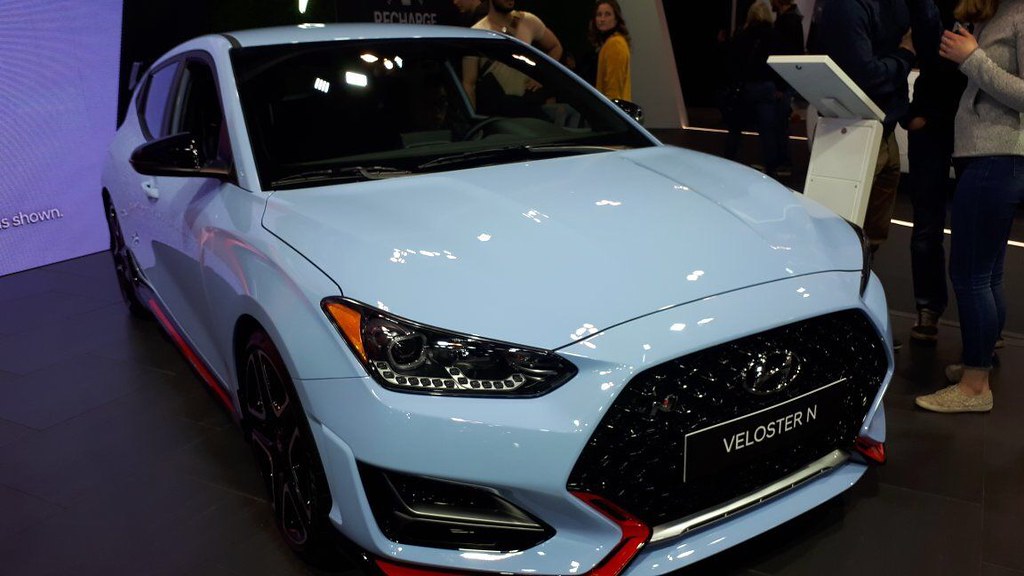
2. **2.0-liter GDi 4-cylinder Turbo Engine (Hyundai Veloster N): A Purposefully Obnoxious Symphony**
The Hyundai Veloster N, though recently discontinued due to shifting market preferences away from hatchbacks, undeniably left its mark as a notable performance vehicle. Specifically, the Veloster N variant garnered considerable acclaim, boasting a turbocharged inline-4-cylinder engine capable of churning out an impressive 275 horsepower. This potent powerplant allowed the car to sprint from 0 to 60 miles per hour in under 5 seconds, firmly establishing its credentials in the hot hatch segment. However, much like its polarizing aesthetics, the Veloster N’s auditory experience proved to be equally divisive, striking a chord that some found exhilarating and others deemed aggressively irritating.
The focal point of this sonic debate was the pronounced “crackle-and-pop” emanating from the exhaust notes, a characteristic that Hyundai intentionally engineered into the car. While a segment of enthusiasts praised this audacious auditory flair, finding it thrilling and engaging, a substantial number of critics found it to be overtly obnoxious. The raw, unfiltered nature of these sounds, particularly during spirited driving, was designed to grab attention. It was a statement, a deliberate departure from the more subdued acoustics of its competitors, aiming to stand out in a crowded market by being unmistakably loud.
Listeners often compared the Veloster N’s engine revs, particularly the sound escaping the tailpipes, to the rather mundane experience of placing one’s ear next to a microwave heating up popcorn. This vivid comparison perfectly encapsulates the rapid, somewhat chaotic popping sounds that defined its exhaust. Yet, it wasn’t merely this unique percussive element that contributed to the car’s distinctive—and often criticized—sound profile. A very noticeable whistling noise, perpetually emanating from the turbocharger, added another layer to this mechanical cacophony, creating an auditory signature that was undeniably complex and multifaceted.
This audacious collection of mechanical sounds was, notably, a deliberate design choice on the part of Hyundai. The brand actively embraced this loud character, even incorporating a slogan, “Live Loud,” into the car’s advertising campaigns. This strategic messaging clearly aimed to appeal to a younger, more adventurous audience, individuals who might actively seek the extra attention and assertive presence provided by such a distinctive vehicle soundtrack. The intention was clear: to make the Veloster N impossible to ignore, both visually and audibly, fostering a sense of youthful rebellion and high-octane excitement.
Despite these clear intentions and marketing efforts, the reception to Hyundai’s sporty hatchback’s audible experience remained markedly mixed. While its performance capabilities were largely lauded, its sound profile consistently divided opinion, illustrating the subjective nature of what constitutes a “good” or “bad” engine sound. For every driver who reveled in its purposeful crackle and whistle, there was another who yearned for a more refined, less attention-grabbing acoustic output. The Veloster N ultimately showcased how a manufacturer’s deliberate attempt to create a unique sound can, paradoxically, become both a defining characteristic and a point of contention.
Car Model Information: 2021 Volvo XC60 T6 Momentum
Name: Hyundai Veloster
Manufacturer: Hyundai Motor Company
Production: 2011–2022
Class: Sport compact car
Layout: Front-engine, front-wheel-drive layout
BodyStyle: hatchback
Predecessor: Hyundai Tiburon
ModelYears: 2012–2022
Assembly: Ulsan
Categories: All Wikipedia articles in need of updating, All articles with unsourced statements, Articles containing Korean-language text, Articles with short description, Articles with unsourced statements from May 2018
Summary: The Hyundai Veloster (Korean: 현대 벨로스터, romanized: Hyeondae Belloseuteo) is a compact car first produced in 2011 by Hyundai, with sales beginning in South Korea on March 10, 2011, and in Canada and the United States since the fall of 2011. In South Korea, it was marketed under Hyundai’s ‘Premium Youth Lab’. It was unveiled on January 10, 2011, at the Detroit Auto Show, and fills the void left when Hyundai discontinued the Hyundai Tiburon after the 2008 model year.
The car differs from most other hatchbacks with its asymmetrical door configuration, featuring one large door on the driver side and two smaller doors on the passenger side. This configuration is more common on commercial vehicles and minivans.
Get more information about: Hyundai Veloster
Buying a high-performing used car >>>
Brand: Hyundai Model: Veloster N
Price: $21,646 Mileage: 95,153 mi.
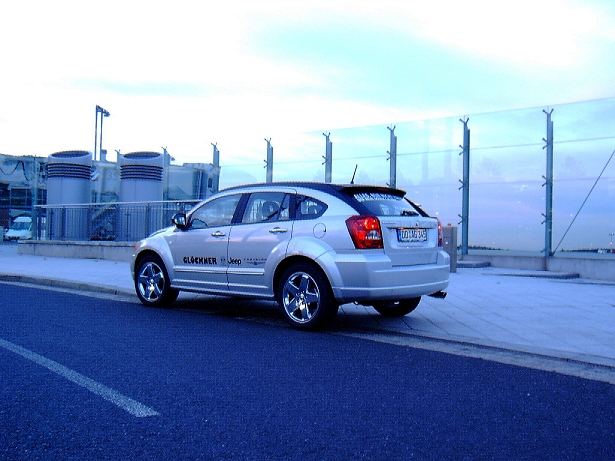
3. **2.4-liter Chrysler World Engine (2007 Dodge Caliber R/T): A Study in Monotony**The mid-2000s saw the introduction of the Dodge Caliber, a station wagon that, in an interesting engineering confluence, shared design and model elements with both Mitsubishi and Jeep. Despite this collaborative heritage, the Caliber’s tenure in production was remarkably brief, spanning only five years. It has since become a vehicle remembered with a distinct lack of reverence, often grouped with other infamous models like the Ford Pinto, cementing its place in the annals of automotive history more as a cautionary tale than a triumph. A significant contributor to its underwhelming legacy was the driving experience, largely influenced by its powertrain.
The Caliber R/T, intended as a sportier variant, came equipped with a version of Chrysler’s World Engine, specifically a 2.4-liter turbocharged engine paired with a continuously variable transmission (CVT). This particular transmission type has often received a less-than-favorable reception within the automotive community, and its integration into the Caliber proved to be no exception. The largest and most pervasive complaint regarding the Caliber’s auditory signature wasn’t that it produced an annoying noise, but rather that its engine sound was almost imperceptible from behind the wheel, irrespective of the variant or transmission chosen. This wasn’t a testament to superior cabin sound dampening, but rather a symptom of a deeper issue.
The core problem stemmed from the engine’s distinct lack of “oomph” under the hood, a sentiment frequently echoed in contemporary reviews. Critics consistently remarked on how the vehicle felt fundamentally underpowered and, frankly, dull to drive. This pervasive sense of lethargy was inextricably linked to the CVT transmission, which, unlike traditional geared transmissions, doesn’t offer discrete shifts. Instead, it maintains engine RPMs at a relatively constant level, striving for optimal efficiency or power delivery, but often at the expense of driver engagement and auditory feedback. The partnership of a less-than-spirited engine with this particular transmission type created a driving experience devoid of excitement.
The CVT in the Caliber was perpetually engaged in a seemingly fruitless quest for the ideal power band, yet it never quite managed to zero in on it effectively. This constant, unfulfilled searching resulted in an engine soundscape characterized by a monotonous series of similar tones. Crucially, these droning acoustics failed to reflect real-time driver actions in any meaningful way, severing the vital sensory link between driver input and vehicle response that is so cherished by enthusiasts. The engine’s lamentable lack of sonic variation meant that throttle inputs rarely translated into a satisfying change in pitch or volume, further diminishing the connection to the machine.
Thus, while other entries on a list of “worst-sounding engines” might be criticized for assaulting the ears with undesirable noise, the Dodge Caliber presented a starkly different, yet equally unappealing, auditory scenario. Its engine wasn’t offensive in its clamor but rather in its profound lack of character, its lifeless and utterly boring soundscape. It offered no inspiring growl, no thrilling roar, just a persistent, unengaging drone that did little to enhance the driving experience. The Caliber R/T serves as a stark reminder that sometimes, the worst sound isn’t an irritating one, but simply the absence of anything compelling at all.
Car Model Information: 2011 Dodge Caliber Heat
Name: Dodge Caliber
Manufacturer: Dodge
Production: March 2006 – November 2011
ModelYears: 2007–2012
Assembly: Belvidere, Illinois,Valencia, Carabobo
Designer: Mike Nicholas (2005)
Class: Compact car
BodyStyle: hatchback
Platform: Mitsubishi GS platform
Related: Jeep Compass,Jeep Patriot,Mitsubishi ASX
Layout: Front-engine, front-wheel-drive layout
Engine: Global Engine Alliance,Global Engine Alliance,Volkswagen,Global Engine Alliance,Global Engine Alliance
Transmission: Magna International,Aisin,Getrag,Continuously variable transmission
Wheelbase: 2635 mm
Abbr: on
Order: flip
Length: 173.8 in
Width: 68.8 in
Height: {{convert,60.4,in,mm,0,abbr=on
Weight: 3052 lb
Predecessor: Dodge Neon,Dodge Neon SRT-4,Chrysler PT Cruiser
Successor: Dodge Dart (PF)
Categories: 2010s cars, All-wheel-drive vehicles, All articles needing additional references, All articles with dead external links, Articles needing additional references from July 2017
Summary: The Dodge Caliber is a compact hatchback manufactured and marketed by Chrysler’s Dodge division from the 2007 through 2012 model years, replacing the Dodge Neon and Chrysler PT Cruiser.
Following the Caliber concept, which debuted at the 2005 Geneva Motor Show, the pre-production version debuted at the 2006 North American International Auto Show, with a market launch in March 2006.
The Caliber was manufactured at the Belvidere Assembly (Illinois) plant, and across its six-year model run, just over 400,000 were produced.
Get more information about: Dodge Caliber
Buying a high-performing used car >>>
Brand: Dodge Model: Caliber
Price: $3,995 Mileage: 222,432 mi.
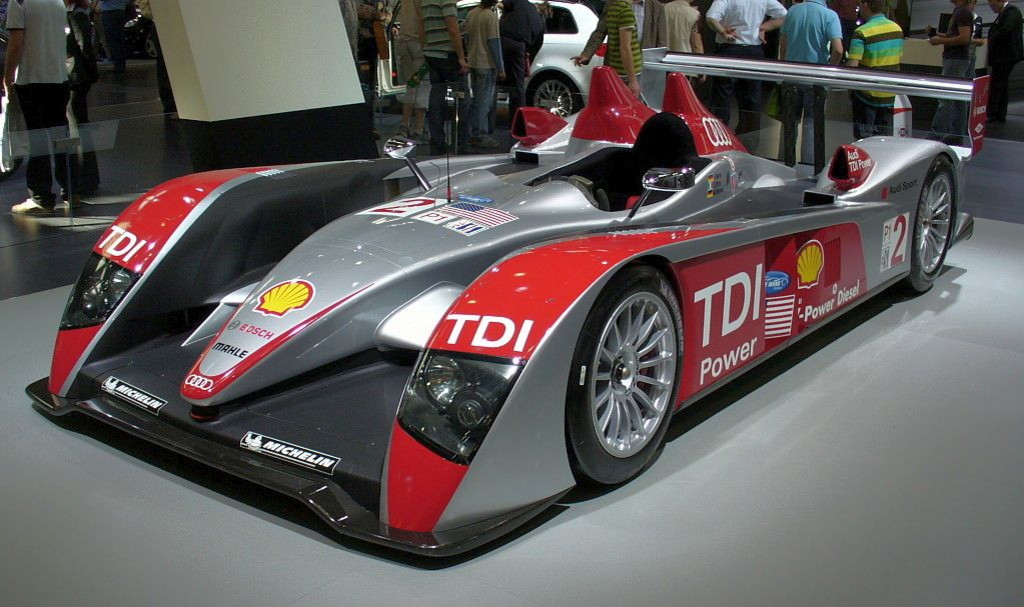
4. **5.5-liter V12 Turbodiesel (Audi R10 TDI): The Sound of Utilitarian Victory**The 5.5-liter V12 Turbodiesel found in the Audi R10 TDI stands as a remarkable testament to engineering prowess, particularly given its incredible dominance at the grueling 24 Hours of Le Mans. This powerhouse engine, a true marvel of diesel technology, propelled Audi to successive victories in 2006, 2007, and 2008, largely capitalizing on its enhanced fuel economy that allowed for longer stints on the track between critical fueling pit stops. Yet, for all its triumphant capabilities and the sleek, purposeful aerodynamic design of the racecar it powered, the R10 TDI presented an auditory experience that was, to put it mildly, jarringly unrefined for a high-performance racing machine. It represents a fascinating dichotomy: a finely tuned, speed-demon that, at certain moments, evoked the far-less-glamorous image of an idling heavy-duty semi truck rather than a finely honed racing beast. In the world of high-octane motorsport, where symphonic engine notes are often as revered as lap times, the Audi R10 TDI offered a distinctly different acoustic signature.
When heard at idle, the Audi R10 TDI exhibits a series of ‘rolling droning tones’ that settle into a mid-range pitch, underscored by an almost continuous ‘underlying crackling noise.’ This auditory profile is far from the resonant growl or high-pitched wail typically associated with legendary race engines; instead, it’s a deep, industrial thrum that many found more grating than thrilling. Few would describe this turbodiesel engine as quiet, with some estimates placing its sound output at around 105 decibels. Such a volume, while common in competitive motorsport environments, can undoubtedly cause hearing damage over prolonged periods, making it less of an exhilarating soundtrack and more of an auditory assault.
Despite the raw power it generated, the sound experience of the Audi R10 TDI at full speed often left spectators with an unexpected observation. While the potent V12 turbodiesel engine was undeniably contributing to the car’s blistering pace, many listeners described the most prominent audio emanating from the car not as the engine itself, but rather the insistent ‘sound of wind and wheel screeches.’ This peculiar emphasis highlights that the engine’s sound profile was less about inspiring awe with a glorious mechanical symphony and more about the raw, functional efficiency required for endurance racing. It was the sound of relentless, unyielding mechanical purpose, rather than aesthetic pleasure.
The repeated victories at Le Mans, secured in 2006, 2007, and 2008, speak volumes about the strategic brilliance behind choosing a turbodiesel powerplant. These wins were directly attributable, in part, to the longer periods of racing that the R10 TDI could achieve between fueling stops. The diesel engine’s inherent fuel efficiency provided a tangible competitive advantage, allowing the team to spend less time in the pits and more time on the track. This strategic benefit underscores that, while its sound was far from captivating, the engine was performing its core function—delivering relentless power and efficiency—with unparalleled success, making its unappealing acoustics a byproduct of its functional excellence.
Ultimately, the 5.5-liter V12 Turbodiesel in the Audi R10 TDI stands as a fascinating case study in automotive sound. It’s an engine whose acoustic signature isn’t “bad” in the sense of signaling mechanical distress or poor design, but rather in its profoundly utilitarian and uninspiring character. It’s the sound of pure, unadulterated engineering for endurance and efficiency, stripped of any attempt at auditory grandeur. For those who crave the evocative roars and melodic pitches of traditional racing engines, the R10 TDI’s industrial drone was an unexpected and, for many, an unwelcome addition to the soundscape of one of the world’s most prestigious races, firmly cementing its place on a list of worst-sounding engines for its sheer lack of sonic charm.
Car Model Information: 2020 Chevrolet Silverado 1500 LT
CarName: Audi R10 TDI
Caption: Neckarsulm
Alt: A front-three quarters view of the Audi R10 that won the 2007 12 Hours of Sebring. The car has the number 2 and the words “TDI Power” emblazoned on the sides, and just above the rollover hoops are the drivers’ names, Emanuele Pirro, Marco Werner, and Frank Biela. The car is finished largely in gloss silver, the wheel arches and sidepods are finished with a bright red as are the rollover hoops above the drivers’ head, and the rear wing and wheels are both a brilliant silver
Category: Le Mans Prototype#LMP1
Constructor: Audi
Predecessor: Audi R8 (LMP)
Successor: Audi R15 TDI
Designer: Ralf Jüttner (technical director)
Team: Joest Racing,Champion Racing,ByKolles Racing
Drivers: Hidden
Chassis: Carbon fiber,monocoque
FrontSuspension: Double wishbone suspension
RearSuspension: As front
Length: 4650 mm
Abbr: on
Width: 2000 mm
Height: 1030 mm
Wheelbase: 2980 mm
Power: 650 PS
Weight: 925 kg
EngineName: Audi
Capacity: 5500 cc
Configuration: DOHC
EnginePosition: mid-engine design,longitudinal engine
GearboxName: Xtrac Limited
Gears: 5-speed
Type: sequential manual transmission
Torque: cvt
Differential: with viscous-mechanical locking differential
Tyres: Michelin
Debut: 2006 12 Hours of Sebring
LastEvent: 2010 24 Hours of Le Mans
Races: 48
Wins: 36
TeamsChamp: 2006 American Le Mans Series season,2007 American Le Mans Series season,2008 American Le Mans Series season,2008 Le Mans Series season
ConsChamp: 2006 American Le Mans Series season,2007 American Le Mans Series season,2008 American Le Mans Series season,2008 Le Mans Series season
DriversChamp: 2006 American Le Mans Series season,2007 American Le Mans Series season,2008 American Le Mans Series season,2008 Le Mans Series season
Poles: 12
FastestLaps: 13
Brakes: Ventilated carbon-fibre discs
Categories: 24 Hours of Le Mans race cars, All Wikipedia articles written in British English, Articles with hAudio microformats, Articles with short description, Audi racing cars
Summary: The Audi R10 TDI (Turbo Direct Injection) is a sports prototype designed and built by Audi in partnership with Dallara. Built to the Le Mans Prototype 1 (LMP1) regulations, the R10 was highly successful throughout its career; the R10 became the first diesel-powered car to win the 24 Hours of Le Mans in 2006, in what would be the first of three 24 Hours of Le Mans wins. Unveiled to the public on 13 December 2005 in Paris, the R10 would go on to win the 2006 24 Hours of Le Mans just 200 days later.
The R10 was eventually replaced by the R15 TDI at the conclusion of the 2008 American Le Mans Series. Colin Kolles of ByKolles Racing (known then as ‘Kolles’) fielded the car for two more years at Le Mans and for a single year in the 2009 Le Mans Series.
Get more information about: Audi R10 TDI
Buying a high-performing used car >>>
Brand: Audi Model: R10 TDI
Price: $31,788 Mileage: 36,094 mi.
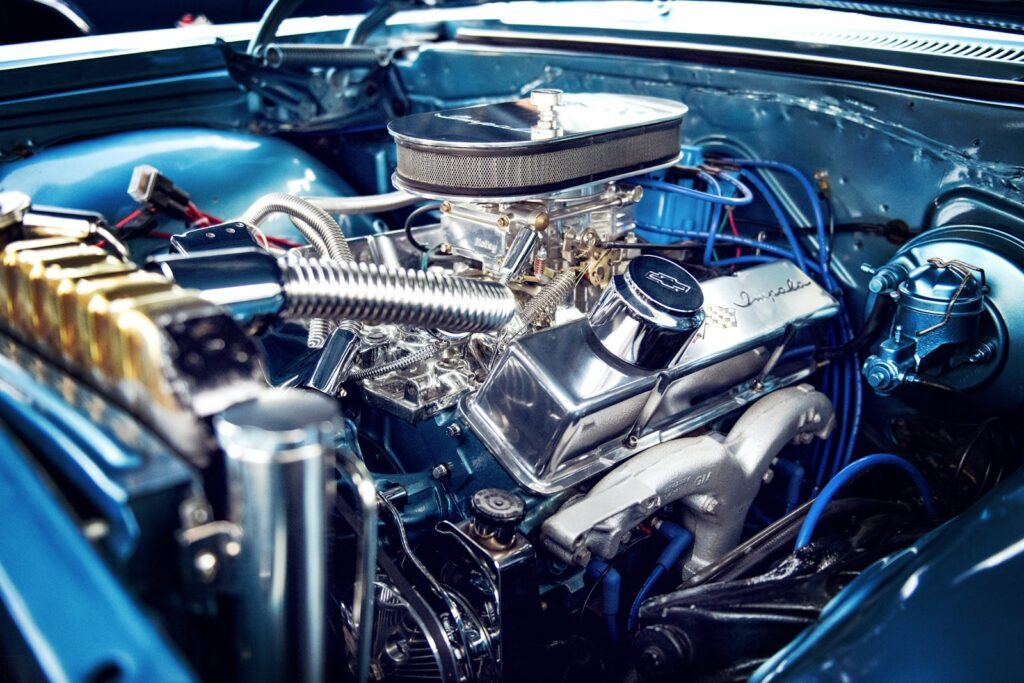
5. **The Iron Duke: A Cacophony of Contention**For those automotive enthusiasts who genuinely remember truly unappealing engine sounds, the infamous ‘Iron Duke’ engine often tops the list, conjuring vivid and regrettable auditory memories. This four-cylinder powerplant, widespread in various General Motors vehicles, from the utilitarian Gumman LLV postal trucks to the more ambitious Pontiac Fiero, has achieved a notorious status. It’s universally felt that any vehicle unfortunate enough to house this engine, particularly the Fiero, ‘truly deserved better’ than the anemic and sonically challenged Iron Duke. Its sheer lack of refinement and unpleasant sound profile made it a benchmark for what a genuinely bad engine could sound and feel like to operate, establishing its legacy as a truly regrettable acoustic signature.
The characteristics of the Iron Duke’s sound profile at idle are particularly memorable, and not in a good way. Owners and critics alike frequently described the engine as causing the car to ‘shake like the car has hydraulics at idle,’ indicating a significant lack of balance and internal refinement. This vibration wasn’t just a tactile annoyance; it was intrinsically linked to the engine’s discordant sound. Compared to the rich, harmonious tones of modern engines like a Nissan VQ or even the distinctive thrum of a Subaru GT86 engine, the Iron Duke sounded less like a symphony and more like a barely contained mechanical struggle. Its very presence under the hood seemed to communicate distress, even at rest.
The driving experience with an Iron Duke engine only intensified these auditory grievances, escalating from mere annoyance to something far more visceral and unsettling. Attempting to accelerate a vehicle equipped with this engine to highway speeds often resulted in an experience so rough that ‘your eyeballs will vibrate from their sockets.’ This vivid description perfectly encapsulates the pervasive, bone-rattling harshness that permeated the cabin. The accompanying exhaust note was equally, if not more, lamentable, described with unflinching honesty as sounding like ‘nearly dead wasps combined with a bucket of bolts being shaken inside your ear canal.’ It was a sound that not only lacked power and refinement but actively assaulted the senses, making any journey a testament to endurance rather than enjoyment.
The Iron Duke’s pervasive unpleasantness was not merely a matter of subjective taste; it was a consequence of its design and purpose. Often found in entry-level or fleet vehicles, it was engineered for cost-effectiveness and basic function rather than performance or refinement. Its anemic power output, combined with a strained, unmusical acoustic output, created a feedback loop of dissatisfaction for anyone behind the wheel. The engine was constantly laboring, and every revolution seemed to amplify its inherent shortcomings, broadcasting its struggle through a symphony of rattling and droning. There was no sweet spot, no moment of grace; just a continuous, underwhelming mechanical dirge that defined the driving experience.
In the pantheon of automotive engines, the Iron Duke occupies a special, if unenviable, position as a truly worst-sounding powerplant. It didn’t merely lack an appealing exhaust note; it actively produced noises and vibrations that detracted significantly from the entire driving proposition. Its legacy is one of pervasive mechanical unhappiness, a constant reminder that sometimes, an engine’s sound can be so grating and devoid of character that it overshadows any functional utility the vehicle might possess. For many, it remains the quintessential example of an engine that simply sounded, and felt, truly horrible, setting a low bar for automotive acoustics that few others have managed to limbo under.
Car Model Information: 1988 Pontiac Fiero Formula
Name: Pontiac Fiero
Caption: 1988 Fiero Formula
Manufacturer: Pontiac (automobile)
Production: August 1983 – August 16, 1988,370,168 produced
ModelYears: 1984 – 1988
Successor: Pontiac Solstice
Assembly: Pontiac, Michigan
Designer: Hulki Aldikacti,George Milidrag
Class: Sports car
BodyStyle: fastback,notchback
Platform: GM P platform
Layout: Rear mid-engine, rear-wheel-drive layout
Engine: {{cvt,151,CID,L,1,disp=flip,Iron Duke engine#LR8,Inline-four engine
Transmission: Turbo-Hydramatic 125,Manual transmission,Getrag 282 transmission,Isuzu
Wheelbase: 2373 mm
Abbr: on
Length: 4072 mm
Width: 1750 mm
Height: 1191 mm
Weight: 1116 to
Categories: All articles with unsourced statements, Articles with short description, Articles with unsourced statements from February 2012, Articles with unsourced statements from July 2024, Articles with unsourced statements from September 2011
Summary: The Pontiac Fiero is a rear mid-engine, light sports car manufactured and marketed by Pontiac for model years 1984 – 1988. Intended as an economical commuter car with modest performance aspirations, it was Pontiac’s first two-seater since their 1926 to 1938 coupes, and the first mass-produced, rear mid-engine car by any American manufacturer.
In addition to using 4- and 6-cylinder engines to help Pontiac meet America’s ‘CAFE’ average fuel economy requirements, the Fiero’s chassis and structure technology used non-load-bearing, composite body-panels, contributing to the car’s light-weight and its unique selling proposition. Pontiac engineers modified the design over its life to enhance its performance and reposition the two-seater closer to the implications of its sporty configuration.
The Fiero 2M4 (two-seat, mid-engine, four-cylinder) placed on Car and Driver magazine’s Ten Best list for 1984, and was the Official Pace Car of the Indianapolis 500 for 1984.
A total of 370,168 Fieros were manufactured over five years’ production, its mild performance, reliability and safety issues becoming points of criticism. The Fiero was discontinued after annual sales fell steadily.
Get more information about: Pontiac Fiero
Buying a high-performing used car >>>
Brand: Pontiac Model: Fiero
Price: $11,000 Mileage: 101,027 mi.
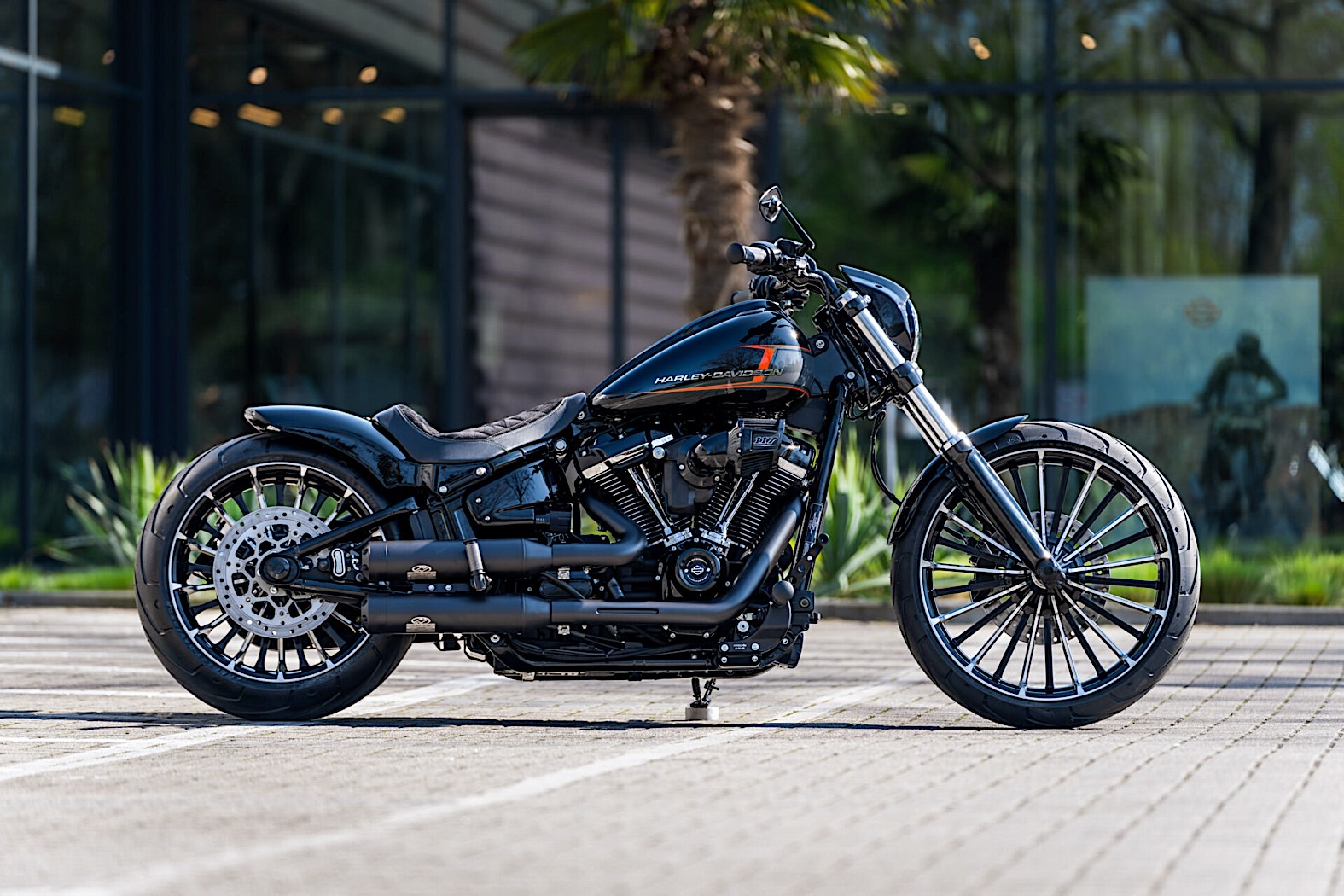
The Harley-Davidson V-twin engine holds an undeniably iconic status in the world of motorcycling, yet its distinctive acoustic signature is perhaps one of the most polarizing sounds in all of automotive culture. Famously characterized by its ‘po-ta-to po-ta-to’ idle and, for some, its ‘one continuous fart’ audio signature, this engine’s sound is as much a part of the Harley experience as its chrome and rumble. This unique thrum, especially amplified by the ‘loud pipes save lives crowd,’ is a defining characteristic, but one that vehemently divides opinion between ardent devotees who embrace it and those who find it utterly unappealing, even irritating.
Harley-Davidson’s commitment to this unique sound is so profound that the company famously attempted to patent its engine noise. While this ambitious legal endeavor ultimately proved unsuccessful, it speaks volumes about how deeply intertwined the sound is with the brand’s identity and heritage. The specific V-twin configuration, with its distinct firing order and exhaust manifold design, creates the characteristic uneven rhythm and powerful bass notes that define its auditory presence. This isn’t merely an accidental byproduct; it’s a meticulously preserved and celebrated aspect of the motorcycle’s engineering, an acoustic emblem that is instantly recognizable across the globe.
However, the very elements that make the Harley V-twin sound distinctive for its fans also contribute to its reputation as a ‘worst-sounding’ engine for critics. The low-frequency, percussive thumping, particularly from modified exhaust systems, can be perceived as an aggressive and even crude noise rather than a refined mechanical expression. The ‘continuous fart’ description, while certainly unflattering, captures the essence of how this sound is interpreted by those not enamored with it: a sustained, guttural expulsion of noise that lacks the melodic qualities or high-revving excitement found in other performance engines. It’s a sound that deliberately eschews conventional notions of engine harmony for a raw, untamed presence.
The cultural phenomenon surrounding ‘loud pipes save lives’ further entrenches this auditory debate. For many Harley riders, the sheer volume and distinctiveness of their engine’s sound are considered essential for both personal expression and enhanced safety on the road. This perspective elevates the engine’s sound beyond mere aesthetics, imbuing it with practical significance. Yet, for pedestrians, other drivers, and even other motorcyclists, this assertive sonic presence can be experienced as a nuisance, an intrusive noise that contributes to urban sound pollution rather than a desirable auditory cue, highlighting the subjective nature of what constitutes a ‘good’ or ‘bad’ engine sound.
Ultimately, the Harley-Davidson V-twin engine serves as a potent reminder that ‘worst-sounding’ is often in the ear of the beholder, deeply influenced by cultural context and personal preference. While its sound is undeniably iconic and instantly recognizable, its distinct thrum is a love-it-or-hate-it affair, placing it firmly on a list of worst-sounding engines for those who prioritize refinement, melodic quality, or simply a less attention-grabbing auditory signature. It’s a sound that prioritizes character and heritage over traditional acoustic beauty, and for many, that character isn’t universally appealing, making it a polarizing but ever-present entry in the discussion of automotive acoustics.
As we conclude our exploratory journey through the less-than-harmonious corners of automotive acoustics, it becomes abundantly clear that the ‘worst-sounding’ engine is often a matter of highly subjective perception, deeply intertwined with engineering purpose, cultural context, and individual auditory preferences. From the rallying cries of Le Mans machines prioritizing efficiency over euphony, to the unrefined mechanical lament of utilitarian workhorses, and the polarizing rumble of iconic two-wheelers, each engine on our list tells a story that extends far beyond simple decibel readings. These powerplants, while perhaps not gracing a ‘best-sounding’ compilation, undeniably leave an indelible mark on the ears and memories of anyone who encounters them, proving that even in their sonic shortcomings, they contribute to the rich, diverse, and often debatable soundscape of the automotive world. They stand as a testament to the fascinating complexities of engine design, reminding us that sometimes, the most memorable sounds are not always the most melodious, but rather the ones that provoke the strongest reactions, for better or for worse.”
, “_words_section2”: “1948

